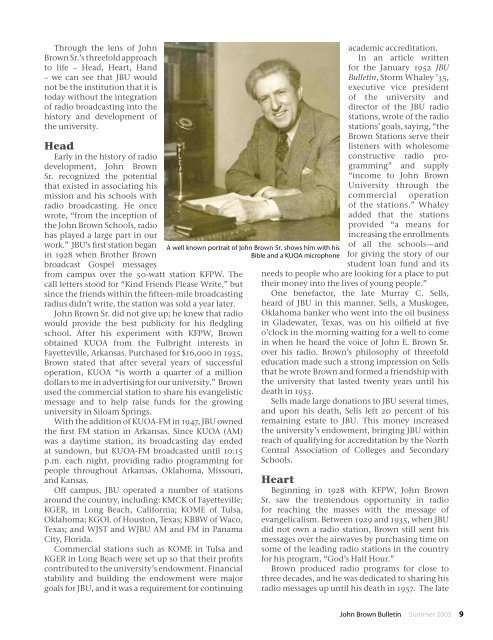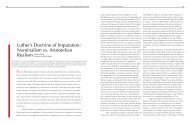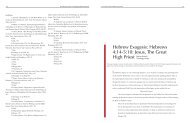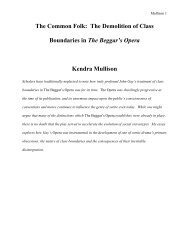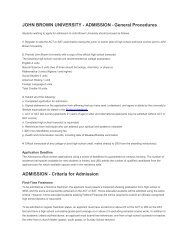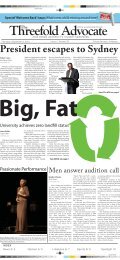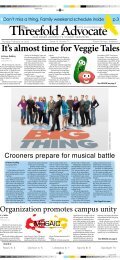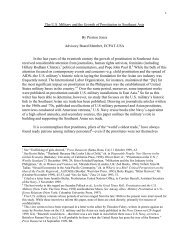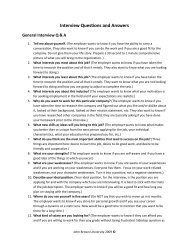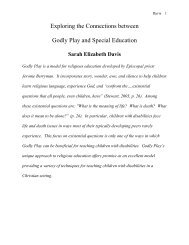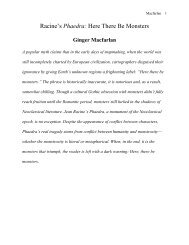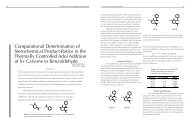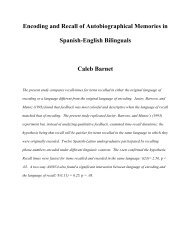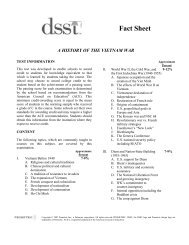Summer 2005 - John Brown University
Summer 2005 - John Brown University
Summer 2005 - John Brown University
- No tags were found...
You also want an ePaper? Increase the reach of your titles
YUMPU automatically turns print PDFs into web optimized ePapers that Google loves.
Through the lens of <strong>John</strong><strong>Brown</strong> Sr.’s threefold approachto life – Head, Heart, Hand– we can see that JBU wouldnot be the institution that it istoday without the integrationof radio broadcasting into thehistory and development ofthe university.HeadEarly in the history of radiodevelopment, <strong>John</strong> <strong>Brown</strong>Sr. recognized the potentialthat existed in associating hismission and his schools withradio broadcasting. He oncewrote, “from the inception ofthe <strong>John</strong> <strong>Brown</strong> Schools, radiohas played a large part in ourwork.” JBU’s first station beganin 1928 when Brother <strong>Brown</strong>broadcast Gospel messagesfrom campus over the 50-watt station KFPW. Thecall letters stood for “Kind Friends Please Write,” butsince the friends within the fifteen-mile broadcastingradius didn’t write, the station was sold a year later.<strong>John</strong> <strong>Brown</strong> Sr. did not give up; he knew that radiowould provide the best publicity for his fledglingschool. After his experiment with KFPW, <strong>Brown</strong>obtained KUOA from the Fulbright interests inFayetteville, Arkansas. Purchased for $16,000 in 1935,<strong>Brown</strong> stated that after several years of successfuloperation, KUOA “is worth a quarter of a milliondollars to me in advertising for our university.” <strong>Brown</strong>used the commercial station to share his evangelisticmessage and to help raise funds for the growinguniversity in Siloam Springs.With the addition of KUOA-FM in 1947, JBU ownedthe first FM station in Arkansas. Since KUOA (AM)was a daytime station, its broadcasting day endedat sundown, but KUOA-FM broadcasted until 10:15p.m. each night, providing radio programming forpeople throughout Arkansas, Oklahoma, Missouri,and Kansas.Off campus, JBU operated a number of stationsaround the country, including: KMCK of Fayetteville;KGER, in Long Beach, California; KOME of Tulsa,Oklahoma; KGOL of Houston, Texas; KBBW of Waco,Texas; and WJST and WJBU AM and FM in PanamaCity, Florida.Commercial stations such as KOME in Tulsa andKGER in Long Beach were set up so that their profitscontributed to the university’s endowment. Financialstability and building the endowment were majorgoals for JBU, and it was a requirement for continuingA well known portrait of <strong>John</strong> <strong>Brown</strong> Sr. shows him with hisBible and a KUOA microphoneacademic accreditation.In an article writtenfor the January 1952 JBUBulletin, Storm Whaley ’35,executive vice presidentof the university anddirector of the JBU radiostations, wrote of the radiostations’ goals, saying, “the<strong>Brown</strong> Stations serve theirlisteners with wholesomeconstructive radio programming”and supply“income to <strong>John</strong> <strong>Brown</strong><strong>University</strong> through thecommercial operationof the stations.” Whaleyadded that the stationsprovided “a means forincreasing the enrollmentsof all the schools—andfor giving the story of ourstudent loan fund and itsneeds to people who are looking for a place to puttheir money into the lives of young people.”One benefactor, the late Murray C. Sells,heard of JBU in this manner. Sells, a Muskogee,Oklahoma banker who went into the oil businessin Gladewater, Texas, was on his oilfield at fiveo’clock in the morning waiting for a well to comein when he heard the voice of <strong>John</strong> E. <strong>Brown</strong> Sr.over his radio. <strong>Brown</strong>’s philosophy of threefoldeducation made such a strong impression on Sellsthat he wrote <strong>Brown</strong> and formed a friendship withthe university that lasted twenty years until hisdeath in 1953.Sells made large donations to JBU several times,and upon his death, Sells left 20 percent of hisremaining estate to JBU. This money increasedthe university’s endowment, bringing JBU withinreach of qualifying for accreditation by the NorthCentral Association of Colleges and SecondarySchools.HeartBeginning in 1928 with KFPW, <strong>John</strong> <strong>Brown</strong>Sr. saw the tremendous opportunity in radiofor reaching the masses with the message ofevangelicalism. Between 1929 and 1935, when JBUdid not own a radio station, <strong>Brown</strong> still sent hismessages over the airwaves by purchasing time onsome of the leading radio stations in the countryfor his program, “God’s Half Hour.”<strong>Brown</strong> produced radio programs for close tothree decades, and he was dedicated to sharing hisradio messages up until his death in 1957. The late<strong>John</strong> <strong>Brown</strong> Bulletin <strong>Summer</strong> <strong>2005</strong> 9


